Áo dài and nón lá
(aodai and palm-leaf conical hat)
Whoever has visited Vietnam would be impressed by the image of girls dressed in aodai. Conventionally, the aodai is separated into two parts: the fitting dress with high collar which is long and loosen the body; the pair of trousers which is ankle-length. The price to possess an aodai is different from its fabrics and the including accessories. Tailors prefer the fabrics which do not easy to crush like silk and synthetic to ensure the comfortableness for people who wear them. The original version of aodai was stitched up in 1744 when everyone was decreed to dress an ensemble by the king Vu Vuong of the Nguyen Dynasty. While áo dài is the monopoly garment for woman, áo gấm is the one for men.
Similarly, nón lá (palm-leaf conical hat) which is stitched from palm leaves and Moc’s or bamboo’s bark also symbolizes for Vietnamese custom. It represents the hard-working but pleasant life of people from paddy field to fishing field. Tourists can experience the process of making nón lá in Chuong village which locates 30km south west of Ha Noi. Nón lá is used to protect farmers from the fierce sunshine or as a souvenir for foreigners to memorize the time they spend in Vietnam.
The image of Vietnamese lady wearing nón lá and áo dài is a symbol of beauty which tourists will never forget.
Ho Chi Minh City
Ho Chi Minh City is the most dynamic and modern city in Vietnam. It consists of nearly 8 million people which equals to 10% of Vietnam’s population. This city is a centre of various cultures, from traditional architectures such as Chinese style pagodas and French style churches to modern skyscrapers and night clubs. There are some places that visitors cannot miss when they visit Ho Chi Minh City:
Reunification Palace (or Independence Palace)
Located on 135 Nam Ki Khoi Nghia Street, District 1, Reunification Palace has been engraved in local people and foreigners’ mind as a witness of history that Vietnamese fought against the aggression of French’s and American’s colonists. It is also known as the house and workplace of former presidents. The old telecommunication equipments and maps in the command room as well as the unfathomableness of the labyrinth remind visitors about the past and the sacrificed Vietnamese soldiers.
Ben Thanh Market
Visitors can reach anything that people buy for their daily needs to local handicrafts and souvenirs. From the transaction of selling and buying, the goods which are popular most to the atmosphere in the market, people can experience the truly local life of Vietnamese. One more thing that customers cannot miss out is the local dishes in the market such as Pho, Hu Tiu and Banh Xeo. However, besides food, bargain is a necessary activity when you purchase goods.
Bitexco Financial Tower
Bitexco Financial Tower is the highest building in Ho Chi Minh City with the height of 262.5 meters. It is a combination of financial, commercial and office function skyscraper. Bitexco Group – the owner of Bitexco Financial Tower has invested US $100 million for this project. The building has structured by glass with the shape of Vietnamese national flower – lotus bud. At the top of the tower, customers can gaze with veneration at the Saigon River while enjoying a warm dinner with family and friends.
Da Nang City
Located in the middle of Vietnam, Da Nang City not only has been known as the centre of 3 world cultural heritages which are Hue old town, Hoi An old town and My Son sanctuary, but also has been voted as one of the sixth most luxurious beaches in the world by Forbes Magazine. Da Nang is also an ideal place for museum and historical sigh lovers. You should not miss the Museum of Cham sculpture, Ho Chi Minh museum, Da Nang Cathedral, Pho Da Nang pagoda etc.
In addition, Da Nang is also known for its magnificent white sand beach along the South China Sea, namely China Beach, and the beautiful Marble Mountain next to it.
Although there are 2 million tourists visiting Da Nang City each year, the government tries to maintain the healthy and peaceful atmosphere as well as the security of the city with no homeless on streets, no drug crime or traffic jams in the city. Therefore, travelers can totally feel comfortable and safe when visiting Da Nang. Recently, Da Nang City has introduced many entertainment activities such as experiencing the nightlife on Bach Dang Street, traditional art performances and activities after midnight. With the ambition to become a event city, Da Nang City has organized big tourist events like International Fireworks Competition which has become the typical event of the city, the International Parachute Competition, to name a few.
Besides these views and shows, tourists should not miss the speciality food such as Quang noodles (mì Quảng), pork rice paper (bánh tráng thịt heo) and seafood.
Classifiers in Vietnamese Language
Classifiers are considered to be one of the most complicated parts of speech in learning Vietnamese language. In a sentence, classifier functions as a noun when it is followed by another noun.
In English we say one pen, two pens, three pens, etc. However, bút in Vietnamese must be accompanied by the classifier cây. Therefore, a pencil in English is một cây bút in Vietnamese. Never do people say một bút, hai bút, but một cây bút, hai cây bút … Similarly, listed below are 3 useful classifiers which are commonly used.
Cái ‘item’ has become one of the most common classifiers for daily life things such as: cái bàn ‘table’, cái chén ‘small bowl’, cái giuờng ‘bed’, cái cửa sổ ‘window’, cái gương ‘mirror’.
Con ‘child’ is a classifier which indicated a single creature such as con chó ‘dog’, con bướm ‘butterfly’, con dao ‘knife’, con sông ‘river’
Bó ‘bunch’, several common terms are bó hoa ‘bunch of flowers’, bó rau muống ‘bunch of morning glory’ and bó lúa ‘bundle of rice’.
Want to Learn Vietnamese? Then You MUST Read This…
Learning a new language can be fun and time-consuming and Vietnamese is no exception. As a Vietnamese teacher, I can understand the difficulty students have to overcome and I am happy to give you some tips to master this very interesting language.
1. Create a schedule to practice Vietnamese for at least 30 minutes per day. As a saying goes, ‘Practice makes perfect’, practice diligently daily will help you become a fluent Vietnamese speaker.
2. Get involved with the Vietnamese community surrounding your living area such as Vietnamese restaurant, grocery store and cultural festival. This will be extremely useful in learning Vietnamese culture and finding people to speak Vietnamese to.
3. Listening to Vietnamese songs and watching movies are good ways to familiarize yourself with pronunciation. Thinking how surprise your friends will be if you can sing a Vietnamese song on some special occasion!
4. Travel to Vietnam. This might be the hardest way but spending time in Vietnam is considered to be the quickest way to learn the language. When you are put in a situation where you have to speak the language to communicate, you can fasten your learning speed tremendously.
– Jenny Lee (Vietnamese Language Consultant)
Phở
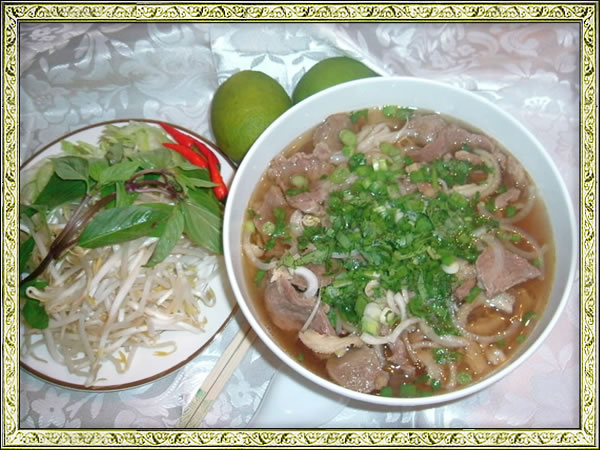
I am Jenny and I am currently teaching Vietnamese at Sydney Languages Solutions. I will introduce to you one of my favorite Vietnamese foods – Phở
Phở is one of the most popular Vietnamese dishes. It origin was in the early 20th century in Nam Dinh, a province in southwest of Hanoi. Enjoying a bowl of hot Phở whenever hungry is kind of pleasure.
Phở’s recipe may vary amongst different regions, but commonly the main ingredients include white rice noodle, broth (made by stewing the cows or pigs bones with spices such as cinnamon sticks, coriander pods, cloves star anise and cardamom), and slices of meat (beef, chicken). Typical garnishes for Phở are onions, lime, chili peppers and bean sprouts.
Due to its popularity, Phở can be easily found in many countries such as Australia, America, French, Canada, China, Indonesia…If you have never tried Phở before, why don’t give it a go? I believe you will love it from the first sight!
Is it necessary to learn Vietnamese tones at the beginner level. Why?
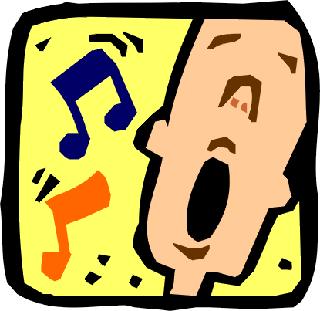
Tone is the use of pitch in language to distinguish lexical or grammatical meaning. Although some languages use pitch to express emotion, to emphasise, to compare or contrast ideas, tones in Vietnamese are used to distinguish words. That means the very tone attached to each word can fundamentally change the meaning of that word. Tonal phonemes in Vietnamese are called tonemes.
For example, one word with exactly the same spelling with a rising tone conveys a completely different meaning from similar word with a low – broken tone.
As a result, in learning Vietnamese, it is very crucial that the learner must try to memorise all the tones, how to pronounce them and write the tone correctly.
If the learners try to memorise the words in Romanised version (as in Lonely Planet), it may help the learner a bit in the first few weeks, but will not help in the long run. When the learner cannot remember to record the tones in the writing system, it is also very difficult for him/her to recollect the pronunciation and how to say the word correctly.
As each change in the tone will carry a different meaning of the word, the incorrect tone will seriously affect the meaning and the listeners’ comprehension of a sentence.
Therefore, always remember to memorise your tones if you want to learn Vietnamese seriously and not for a few weeks just to survive in the country 😉
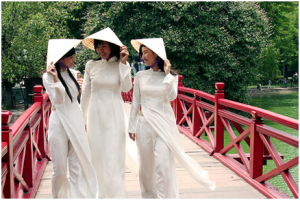

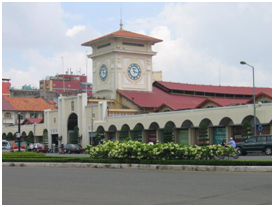
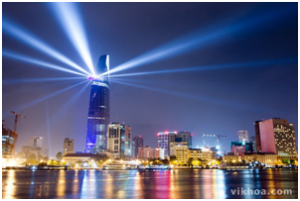
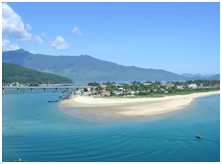
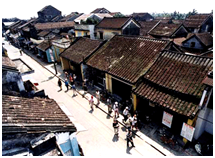



Latest Comments